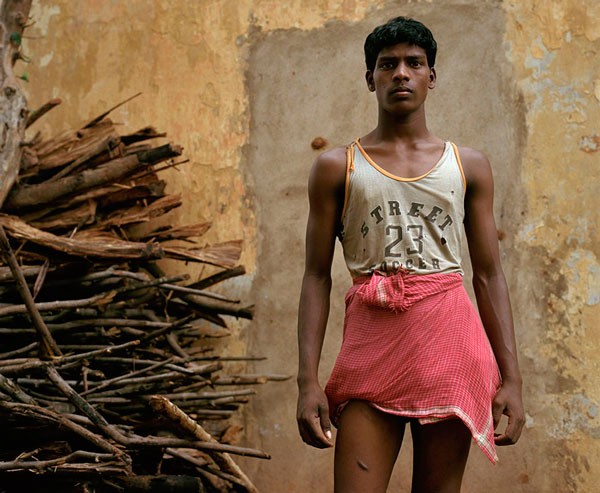You don't hear a lot about mass violence in India. Poverty, yes. Floods and famine, yes. But we rarely see headlines about the kind of incident that took place in eastern India in 2008: a group of extremists attacking a village, destroying the houses and forcing the inhabitants to flee. Rarer still is the alleged cause: "a rising tide of religious intolerance." The intolerant? Zealous Hindus. The intolerable? Indian Christians, also members of the Dalit, or "untouchable" class.
Two Pittsburgh-based photographers documenting one community's recovery present their portfolio, Lynn Johnson and Jen Saffron: The Koraput Survivors Project, now on display at 707 Penn Gallery. Johnson and Saffron are prolific shooters, but they have paid particular attention to a wrecked village in the Koraput region and its 500 refugees. Johnson first encountered the villagers while on assignment for National Geographic, and she and Saffron are advocates for the Koraput survivors as well as documentarians. Scores of portraits and landscapes illustrate the villagers' daily struggle to survive. Beyond the artists' statement, there are no captions or lengthy descriptions. What we see is what we get.
Most of the prints are black-and-white, arranged along the wall like a strip of negatives. They are grouped thematically, but the most provocative series shows workers in the open land. Koraput appears barren and inhospitable, and the villagers' tools are medievally simple. As they toil in worn clothes beneath a bitter sun, the Koraputians have no automation to ease their labor. Rebuilding their lives is slow and grudging work, and Johnson and Saffron ably capture the backbreaking tedium of their days.
What's striking about the Project is the purity of its presentation: We see color portraits of men and women, children and grandparents, some arranged like a gridded dossier, others hugely blown up. It's hard to say which photographer shot which photograph (all images are simply credited to "the Koraput Survivors Project"), and they refuse to editorialize their work. Meanwhile, they show only the villagers themselves — not the attackers, not government officials, not even passersby, eyeing them from a distance. For Saffron and Johnson, documenting the villagers' routine is enough.
In the era of Vice Media, when photojournalists often prove themselves through daredevilry in war zones, this exhibit is a kind of relief. Instead of fetishizing the villagers' suffering, the photographs show quotidian humanity — people, just like us, taking life one hard day at a time. Koraput will never be front-page news, and the most we First Worlders can offer refugees are our monetary donations (thanks to a widget on the Project's website, www.communityhousepittsburgh.org/Koraput/). But Johnson and Saffron have done us the service of showing their faces. And if you happen to amble through 707 Penn Gallery one afternoon, you will at least appreciate that they existed.















